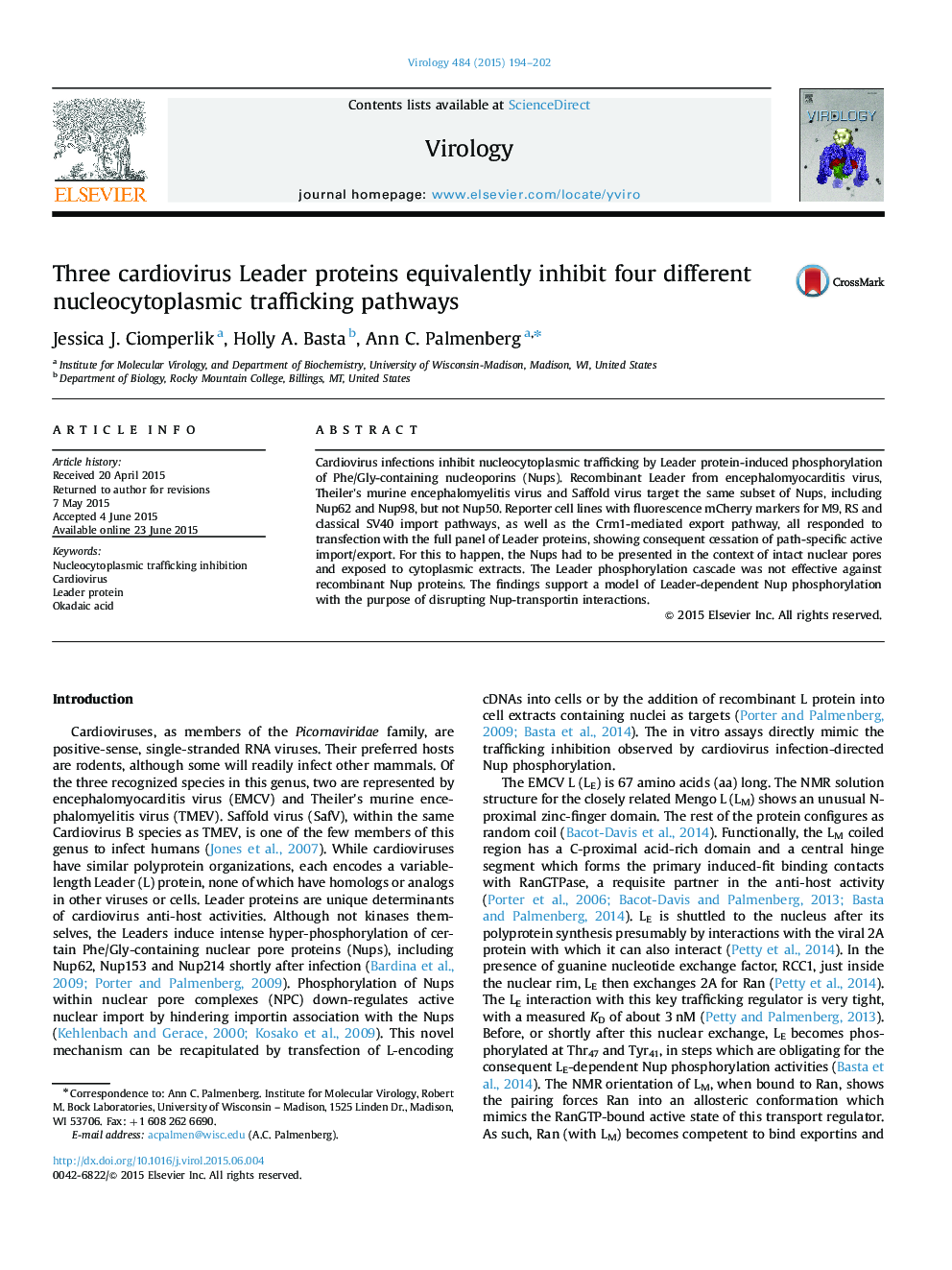| Article ID | Journal | Published Year | Pages | File Type |
|---|---|---|---|---|
| 6139115 | Virology | 2015 | 9 Pages |
â¢Nup98, but not Nup50 becomes phosphorylated by cardiovirus Leader protein-dependent mechanisms.â¢At least four independent nucleocytoplasmic trafficking pathways are inhibited by this process.â¢Nups must be presented in a nuclear pore context for Leader-directed phosphorylation.â¢Leader, by itself, does not cause activation of cellular kinases.
Cardiovirus infections inhibit nucleocytoplasmic trafficking by Leader protein-induced phosphorylation of Phe/Gly-containing nucleoporins (Nups). Recombinant Leader from encephalomyocarditis virus, Theiler׳s murine encephalomyelitis virus and Saffold virus target the same subset of Nups, including Nup62 and Nup98, but not Nup50. Reporter cell lines with fluorescence mCherry markers for M9, RS and classical SV40 import pathways, as well as the Crm1-mediated export pathway, all responded to transfection with the full panel of Leader proteins, showing consequent cessation of path-specific active import/export. For this to happen, the Nups had to be presented in the context of intact nuclear pores and exposed to cytoplasmic extracts. The Leader phosphorylation cascade was not effective against recombinant Nup proteins. The findings support a model of Leader-dependent Nup phosphorylation with the purpose of disrupting Nup-transportin interactions.
